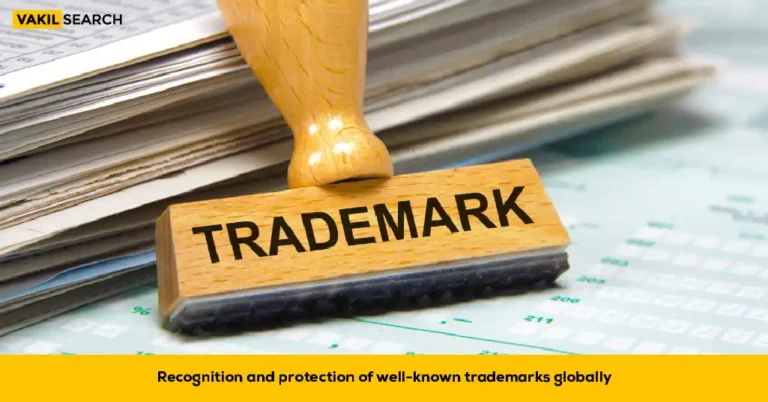Know which should you opt for, trademark renewal or trademark restoration according to your requirements. Get in touch with our Vakilsearch trademark experts.
Overview on Trademark Renewal or Trademark Restoration
When it comes to safeguarding intellectual property, trademarks play a vital role. A trademark represents a brand and its reputation. It’s a way of identifying a product or service to the consumer. However, like any other asset, trademarks require maintenance to remain active and valid. In India, trademark owners must decide whether to renew their trademark or restore it. Which Should I Opt For, Trademark Renewal or Trademark Restoration?
What is a Trademark?
A trademark is a unique symbol, word, phrase, or design that identifies a product or service. It’s a way of distinguishing one brand from another. Trademarks are registered with the government and are protected by law. A trademark can be a logo, a product name, a tagline, or a combination of all these. It’s a valuable asset that a company or individual must protect and maintain.
Trademark Renewal in India
Trademark renewal is the process of extending the validity of a registered trademark. In India, the first renewal is due ten years after the date of registration. Subsequently, it’s required to renew every ten years. The renewal process is straightforward and can be done online or offline.
Steps for Trademark Renewal in India
Step 1: File for renewal with the Trademark Registrar
Step 2: Pay the required renewal fees
Step 3: Wait for approval from the Registrar
Step 4: Receive the renewed trademark certificate
Trademark Restoration in India
Trademark restoration is the process of renewing an expired trademark. If a trademark owner fails to renew their trademark within the specified timeframe, it becomes expired. An expired trademark loses its protection and can no longer be used. However, it’s possible to restore an expired trademark by following the restoration process.
Steps for Trademark Restoration in India
Step 1: File for restoration within one year of expiration
Step 2: Pay the required restoration fees
Step 3: Wait for approval from the Registrar
Step 4: Renew the trademark
Differences Between Trademark Renewal and Restoration
The primary difference between trademark renewal and restoration is the status of the trademark. If a trademark is still active, it can be renewed. However, if a trademark has expired, it must be restored before it can be renewed. Another difference is the timeframe for filing. Trademark renewal can be filed at any time during the ten-year validity period. In contrast, trademark restoration must be filed within one year of the trademark’s expiration.
Which Option Should You Opt For?
The decision to renew or restore a trademark depends on its current status. If your trademark is still active, you should renew it. Renewal is a simple process, and it ensures that your trademark remains valid and protected. On the other hand, if your trademark has expired, you should restore it before renewing it. Restoration requires additional paperwork and fees, but it’s essential to restore the trademark’s protection and validity.
Consequences of Not Renewing or Restoring a Trademark
Failure to renew or restore a trademark can have severe consequences. If a trademark is not renewed, it becomes expired, and its protection is lost. Anyone can use the trademark without fear of legal action. In addition, the trademark owner may have to go through a lengthy and expensive process to reclaim the trademark.
If a trademark is not restored, it cannot be renewed. The trademark owner will have to apply for a new trademark registration, which is a time-consuming and expensive process. Moreover, the new trademark may not have the same level of protection as the original one.
General Requirements for Trademark Renewal and Trademark Restoration
Filing the appropriate forms: Trademark owners must file the correct forms with the Trademark Registrar for renewal or restoration. The forms can be filed online or offline, depending on the preference of the owner.
Paying the renewal or restoration fees: Trademark owners must pay the required fees to renew or restore their trademarks. The fees vary depending on the type of trademark and the stage of the process.
Timely filing: Trademark owners must ensure that they file for renewal or restoration within the specified timeframe. Renewal can be filed at any time during the validity period, while restoration must be filed within one year of the trademark’s expiration.
Meeting eligibility requirements: To renew or restore a trademark, the owner must meet the eligibility requirements, such as being the registered owner of the trademark.
Providing supporting documents: Trademark owners may need to provide supporting documents, such as proof of use of the trademark or a power of attorney, depending on the specific requirements of the Trademark Registrar.
Conclusion
In conclusion, trademark renewal and restoration are essential processes for maintaining the validity and protection of a trademark. Trademark renewal is a straightforward process that extends the validity of an active trademark, while trademark restoration is necessary for an expired trademark before it can be renewed. Failure to renew or restore a trademark can lead to severe consequences, such as losing protection or having to apply for new trademark registration. Therefore, it’s crucial for trademark owners in India to stay aware of their trademark’s status and take the necessary steps to renew or restore it in a timely manner.If in case of any queries, contact our trademark experts at Vakilsearch.
Read More:-
- Trademark reply format
- What is trademark objection?
- Differences Between Trademark Objection and Opposition
- Best Way to Register an Foreign Trademark










